Torn Foot Ligament
Usually, we don’t give our feet much consideration until we start to feel pain when we walk or see other indications of a major foot injury.
Torn ligaments are one of the more frequent and potentially dangerous foot injuries, however, the muscles and bones of the foot can also be strained. The strong, flexible structures called ligaments hold the bones in your body together; a sprain is a term used to describe the injury that results from a torn ligament.
Treatments include conservatively or surgical depending on the severity of the injury. An orthopedic surgeon may be needed to repair damaged ligaments in the foot, depending on the extent of the injury.
What is a Torn Foot ligament?
- A torn foot ligament is an injury where one of the strong, fibrous bands connecting your foot bones stretches or tears beyond its normal capacity
- A ligament is a strong fibrous band that joins one bone to another. It also serves as a link between bones and cartilage, which is essential to your body’s joints.
- Although they are extremely strong, ligaments can rip or even stretch. This leads to different sprain injury grades or levels.
- A torn ligament may occur from forcing a joint out of its natural alignment. This might happen after a fall, an unexpected turn, or a physical hit.
- Due to the frequent motion and high stress placed on joints during athletic exercise, these injuries are widespread. Ankle ligaments are frequently impacted.
Types of Ligament Tear according to Grades:
The degree of the tearing in ligaments(sprains) is described by a grade.
- Grade 1(mild): A minor sprain that causes some ligament injury but not to a great extent of tearing.
- Grade 2(moderate): A partial tear along with a significant sprain. There could be unusually loose joints.
- Grade 3 (severe): A full ligament tear along with a severe sprain. It is not possible to use the unstable joint.
Symptoms of Torn Foot Ligament
There are several indications that a ligament is injured. These could consist of:
- Sensitivity to touch and pain
- bruising and swelling
- Having trouble moving the joint
- Having difficulty applying weight to the joint
- signs and symptoms that worsen with time
- When a ligament is injured, you can hear a pop or feel tearing.
- Muscle spasms might also be brought on by a damaged ligament. Ankle injuries can take many different forms.
If you’re having issues with your ankle, it’s crucial to visit your doctor. Whether the injury is a sprain or something more serious can be determined by your doctor.
Causes of the Torn Foot ligament
- Ankle sprains frequently happen when the foot unexpectedly flips or twists, causing the ankle joint to become malpositioned. Ankle twists can occur during physical exercise when there is a quick or unplanned movement. This results in a tearing or stretching of one or more ankle ligaments.
- These tears may result in some swelling or bruises. When you put weight on the affected area, you could also experience pain or discomfort. The sprain may potentially cause injury to blood vessels, tendons, and cartilage.
- Anyone at any age can suffer from an ankle sprain. Sports-related activities, uneven surfaces, and even the wrong kind of shoes can result in this kind of injury.
There are three categories for ankle-torn (sprains):
- Ankle inversion sprain: This happens when the ankle twists inward, harming the lateral ligaments. This type of ankle sprain is most common because the lateral ligaments are thinner than the other ankle ligaments.
- Ankle eversion sprain. An ankle rolling outward that sprains the medial (deltoid) ligaments is known as an eversion sprain. Even though this type of ankle sprain is rare, it can happen when jumping or running, especially on uneven surfaces.
- High ankle sprain: The syndesmotic ligaments are injured in this injury. Competitive athletes typically experience it following a forceful blow to the ankle or a strenuous twisting motion. Those who play American football, basketball, hockey, soccer, or winter skiing are particularly prone to it.
Risk Factor of the Torn Foot ligament
- Participation in sports: A common sports injury is an ankle sprain, especially in activities like basketball, tennis, football, soccer, and trail running that call for leaping, cutting, rolling, or twisting of the foot.
- Uneven outside surfaces: The chance of suffering an ankle sprain increases when jogging or walking on uneven terrain or in unfavorable field conditions.
- Previous damage to the ankle: You run the risk of spraining your ankle again if you’ve already done so or if you’ve had another kind of ankle injury.
- Inadequate physical state: When playing sports, having weak or flexed ankles can make you more likely to sprain your ankle.
- Inappropriate footwear: Ankle injuries are more likely to occur in shoes that don’t fit well or are inappropriate for the activity. High-heeled shoes in general also increase this risk.
Diagnosis of the Torn Foot ligament
Your doctor might suggest one or more of the following imaging tests if the injury is serious to rule out a broken bone or assess the extent of ligament damage more accurately:
- X-ray: An X-ray creates images of your ankle bones by passing a small amount of radiation through your body. This technique works well to rule out fractures of the bones.
MRIs, or magnetic resonance imaging: A powerful magnetic field and radio waves are used in magnetic resonance imaging (MRI) to create finely detailed 3-D or cross-sectional images of the soft internal ankle structures, such as ligaments. - CT scan: A CT scan can provide further information about the joint’s bones. CT scans provide cross-sectional or three-dimensional images by combining X-rays taken from various angles.
- Ultrasound: An ultrasound creates images in real time by using sound waves. When the foot is in various postures, these pictures might assist your physician in determining the health of a ligament or tendon.
- Arthroscopy: A damaged ligament may occasionally be diagnosed with this invasive surgery. To view the ligament, your healthcare professional must put a device known as an arthroscope into the joint.
Treatment of the Torn Foot ligament
Although a ruptured ligament can heal on its own with conservative care, a medical practitioner should always be consulted for an evaluation of this condition.
Surgery might be necessary to hasten the healing process and increase the likelihood that you will regain full mobility.
The severity and location of the injury determine how long it takes for a torn ligament to heal up. For example, a grade 2 ankle sprain with a partial tear might recover in three to six weeks, but a grade 3 sprain with a full tear might take several months.
Self-Care
Regarding ligament injuries, one of the most standard “first” treatments is the P.R.I.C.E. approach, which stands for protection rest, ice, compression, and elevation.
- Protection: To stop additional motion and correct alignment, try to immobilize the problematic location or avoid using a weight-bearing joint. It can be suggested that you use crutches or a brace/splint to keep off the affected area.
Rest: Reduce the amount of everyday activities and frequent exercise you do. A sprain requires taking a break from your regular schedule to allow the area to recover. - Ice: For ten minutes, apply an ice pack to the wounded region. Four to eight times a day, repeat this. Use an ice pack, an ice bag, or a plastic bag with ice inside that has been wrapped in a towel. Using an ice cube wrapped in a washcloth or freezing water in a Plastic cup is an even more effective technique to apply ice to the affected area. Peel back the cup’s top once it has frozen to make it resemble a frozen push pop. Apply a back-and-forth or circular motion across the affected area. This will get thoroughly into the region of the issue, so you just need to ice it for three to five minutes. Apply the ice for no more than 20 minutes at a time to prevent cold harm and frostbite. You should stop using ice if you begin to feel numb or uncomfortable.
- Compression: Applying constant pressure to the wounded area may aid in the reduction of edema. You can always cover the injured area from your toes to your groin (lower body) with an ACE bandage. This keeps the area around the injured part from swelling distally, or away from the center of your body. A bandage should be just the right amount of tight without being so tight as to cause pain or restrict blood flow. You can change as necessary. Compression stockings provide a simpler method of applying compression from the knee down. These are readily available for purchase over the counter or online.
- Elevation: Keep the wounded region raised on a pillow to help reduce swelling. It is best to keep the injury above your heart level.
Medication
- Medication could be helpful in the management of inflammation and discomfort.
- Advil (ibuprofen), an over-the-counter medicine, may be suggested by your healthcare professional. Additionally, they might recommend medicine for edema and discomfort.
Physical Therapy
- Your healthcare provider could suggest physical therapy or at-home exercises to help restore ligament and joint function once the pain and swelling subside. Depending on how bad the ligament rip is, the healing process could take several weeks or perhaps a year.
- You will collaborate with a physical therapist to restore your joint’s strength and range of motion. Your therapist will offer you a home workout program that will gradually increase the intensity of your strength and balance exercises (for knee and ankle sprains) until you are back to your pre-injury level of activity.
- Resuming activity and participating in sports programs can be facilitated by physical therapy, which can also strengthen the injured joint beyond its initial state.
- It is highly suggested that you undergo physical therapy if you have experienced recurrent torn ligament, such as an ankle sprain, or if you were immobilized while the injury healed, like wearing a cast or boot.
- These measures will help to lower your risk of re-injury. and demonstrate activities to keep the damaged joint from stiffening up.
Surgery
- In rare cases, repairing a badly torn ligament may need surgery.
- If surgery is advised, the surgeon will assess the damage, determine if it can heal with or without surgery, and offer recommendations for the best course of action depending on your age, degree of activity, and surgical risk factors.
Exercise for the Torn Foot ligament
If the ankle injury is not too serious, most patients can begin ankle rehabilitation activities within three days. However, there is no defined time limit. Pay attention to your body and follow the instructions given by your doctor.
These are fundamental exercises that you may execute up to 3 times each day to help you maintain your ankle’s range of motion and flexibility.
Ankle Pumps-up
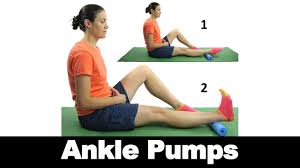
Static stretching has been demonstrated to enhance ankle dorsiflexion (upward movement of the foot).
- This exercise can be done sitting or standing while holding onto a wall or counter. To begin with:
- Point your toes upward, as if you’re attempting to touch your toes to the front of your shin.
- Maintain consistent tension in this posture for 30 seconds and then release.
- Repeat for each leg 5 times.
Ankle pumps-down
- This exercise strengthens the muscles in the back of your lower leg (calf) and increases ankle plantarflexion (downward movement of the foot).
- Ankle pump-downs can be done sitting or standing while holding onto a wall or counter.
- Point your foot and toes as far down as you can. Your calf muscles should flex at the back of your leg.
- Maintain consistent tension in this posture for 30 seconds, and release.
- Repeat for each leg 5 times.
Ankle Alphabet

- Place yourself on a couch or a comfy chair.
- Extend your leg and use your big toe to draw the letters of the alphabet in the air.
- You can repeat this 2 or 3 times if there is no discomfort.
- You’ll be able to move your ankle in all directions with this simple workout.
Planter Fascia massage

- The plantar fascia, the thick band of tissue that links the heel bone to the toes, is massaged directly with this exercise.
- To begin with:
- Sitting comfortably in a chair, cross one leg over the other knee
- Until your foot is fully dorsiflexed, use one hand to pull your toes back.
- Massage the bottom of your foot just in front of the heel with the other hand.
Toe-curl
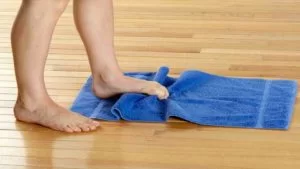
This exercise will assist to strengthen and stretch your toes. A complicated combination of muscles (mainly the flexor digitorum brevis and extensor digitorum brevis) direct toe movement, easily affected by a foot or ankle injury.
To begin with:
- Put your foot on a floor towel while seated, then curly your toes towards the towel to make it closer to you.
- The towel should then be pushed away from you using your toes as well.
- Put a weighted object on the other end of the towel, like a soup can, to make this workout more difficult.
Heel Raise
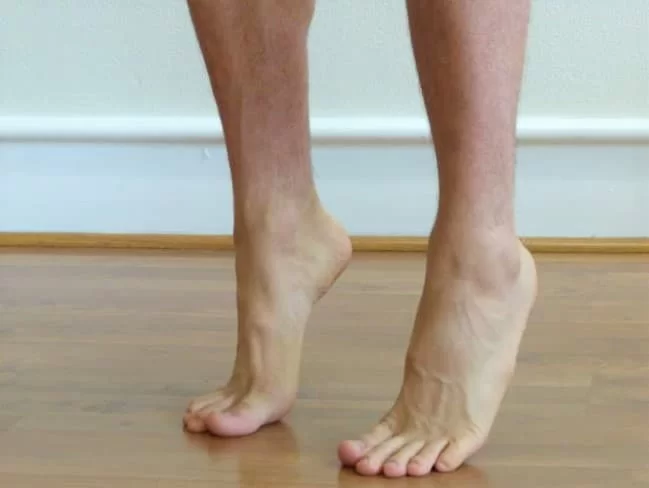
This workout strengthens the toes, feet, and calves. How to do it:
- Grasp a counter or a wall for balance.
- As far as you can go on your tiptoes without hurting yourself, do so.
- Maintain the strain in the posture for 10 seconds, and release.
- Begin with three sets of ten exercises and work your way up to three sets of thirty.
- As you gain strength, you may go to single-leg toe lifts, which apply more weight to each leg.
Towel Calf Strech
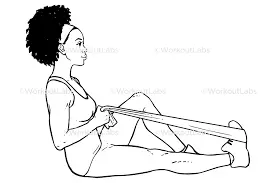
This aided workout safely and efficiently increases ankle dorsiflexion and stretches the calf muscles. To begin with:
- Place your feet on the floor and maintain your knees straight.
- Pull the back of a towel around your foot until you feel a strong stretch in your calf muscle.
- Maintain the position for 30 seconds.
- Begin with three sets of ten exercises for each leg, gradually increasing to three sets of thirty exercises.
Wall Stretch with Straight-Knees
This exercise, often known as the runner’s stretch, helps to stretch the whole gastrocnemius-soleus muscle complex. To begin with:
- Place yourself in a straight line in front of a wall.
- For balance, push your hands on the wall.
- Put one foot in front of you and the other behind you.
- Maintaining your heels flat on the floor, push your hips forward until your entire calf experiences a powerful stretch. After 30 seconds of holding the pose, release it.
- Begin with three sets of ten exercises for each leg, gradually increasing to three sets of thirty exercises.
Wall Stretch with Bent Knees
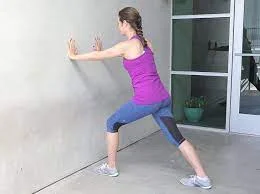
To begin with:
- Place yourself in a straight line in front of a wall.
- Set your hands on the wall for balance.
- Put one foot in front of you and the other behind you.
- Press your hips forward till you feel a stretch down the back of your leg while keeping your knees slightly bent and your heels squarely on the floor.
- Hold for 30 seconds while maintaining tension. Release.
- Begin with three sets of ten exercises for each leg, gradually increasing to three sets of thirty exercises.
Massage with an Ice Bottle
This is an excellent workout for (literally) cooling down. Prepare by filling a plastic bottle (such as a throwaway drink bottle) with water and freezing it overnight.
To round up your workout, try these:
- Put the frozen water bottle on the ground.
- Three times each day, roll your foot over it for five minutes. Keep your foot moving; don’t let the bottle linger in one place.
- If the cold bothers you, put a kitchen towel between the bottle and your foot. Stop and avoid this activity if you experience discomfort or a prickly sensation.
Prevention of the Torn Foot ligament
- Ankle injuries are not always preventable. But, you can take the following safety measures to safeguard your ankle ligaments, especially when exercising:
- Steer clear of uneven surfaces as they increase the risk of rolling or twisting your ankle.
- Boost your flexibility and balance. This teaches your body how to respond to errors or falls without putting undue stress on your ankles.
- To increase flexibility, stretch frequently. To enhance balance, practice standing on one foot.
- Lunges, squats, squat leaps, and standing heel lifts are exercises that strengthen your ankles.
- To help your body respond and change course safely when needed, strengthen your core.
- Keep your weight within a reasonable range to lessen the strain on your ankles.
- Change up your training plan by incorporating both cardio and weight training. Stretch after your workout and warm up before increasing the intensity.
- Put on cozy footwear.
FAQs
How long does it take for a damaged ligament in the foot to heal?
The majority of minor to severe injuries will recover in 2 to 4 weeks. More serious injuries, such as those requiring a cast or a shoe, will take longer to recover, up to 6 to 8 weeks. Surgery will be required for the most severe injuries to decrease the bone and allow the ligaments to recover.
Can damaged ligaments in the foot heal on their own?
Grade I and II wounds will most likely heal on their own If You Allow them. means, that you give your body a chance to heal that ligament without returning to the field or court.
What are the signs of a ruptured foot ligament?
At the site of the injury, swelling and bruising will occur. Tenderness and pain are centered on the top, bottom, or sides of your foot near the arch. Walking or other physical activity causes pain to worsen. Impossibility of bearing weight on the damaged foot.
How can I repair my sprained ligaments at home?
If you have a small ligament tear, such as a sprained ankle, you may be able to treat it at home. RICE treatment (rest, ice, compression, and elevation) is frequently recommended by doctors.
Does ice promote ligament healing?
Sprains in ligaments are graded, and for minor symptoms, cold therapy may be able to alleviate swelling and discomfort in a short period; however, if the ligament tears entirely, simple cold therapy may be ineffective, and surgery may be required.
Can an X-ray detect a damaged ligament?
Traditional X-rays cannot detect ligament injury, and even more modern scans such as CTs and MRIs cannot detect ligament damage because they do not record the ligament in motion, but you do not have to live with ligament discomfort.
References
- SoutheastOrtho. (2017, April 21). Treatment and symptoms of a torn ligament in your foot. Southeast Orthopedic Specialists. https://se-ortho.com/treatment-symptoms-torn-ligament-foot/
- Quinn, E. (2023, October 16). Torn ligament symptoms and treatment. Verywell Health. https://www.verywellhealth.com/what-is-a-ligament-3120393
- Professional, C. C. M. (n.d.-c). Foot ligaments. Cleveland Clinic. https://my.clevelandclinic.org/health/body/21597-foot-ligaments
- Ankle sprain or ligament injury – Bunbury Foot & Ankle surgeon. (n.d.). https://www.ryandusart.com.au/ankle-sprain-ligament-injury
- Wall, T. (2023, February 21). Foot ligament injury or sprain – JOI rehab. JOI Jacksonville Orthopaedic Institute. https://www.joionline.net/library/show/foot-ligament-injury/

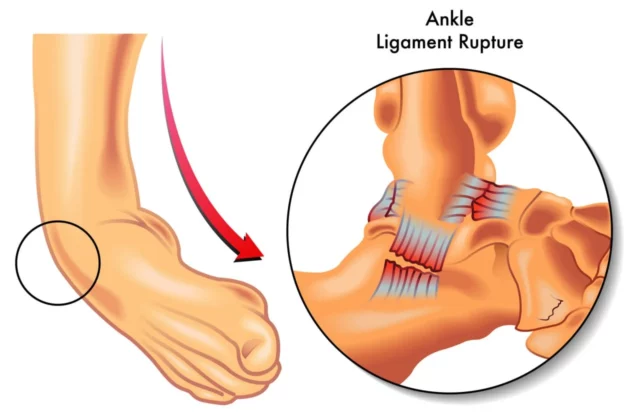
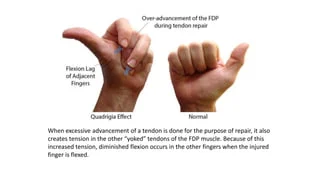

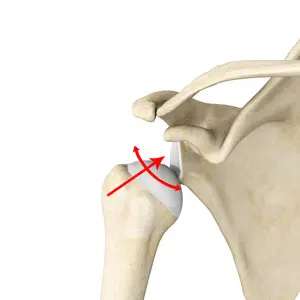
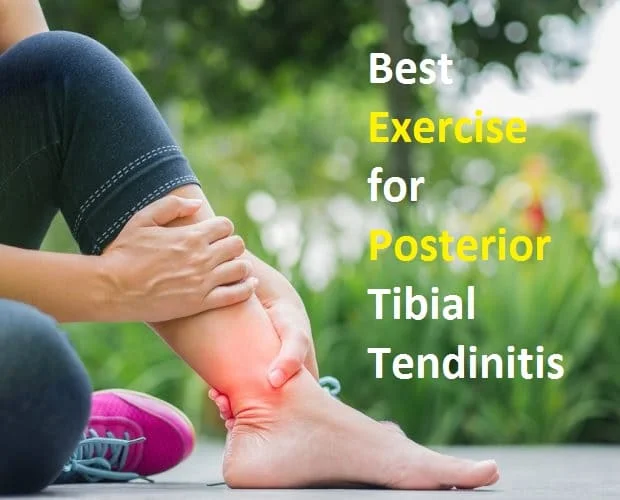
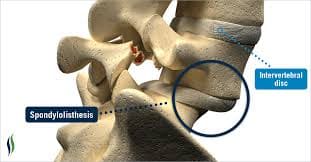
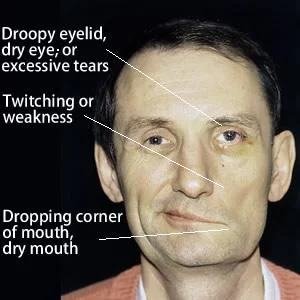
One Comment